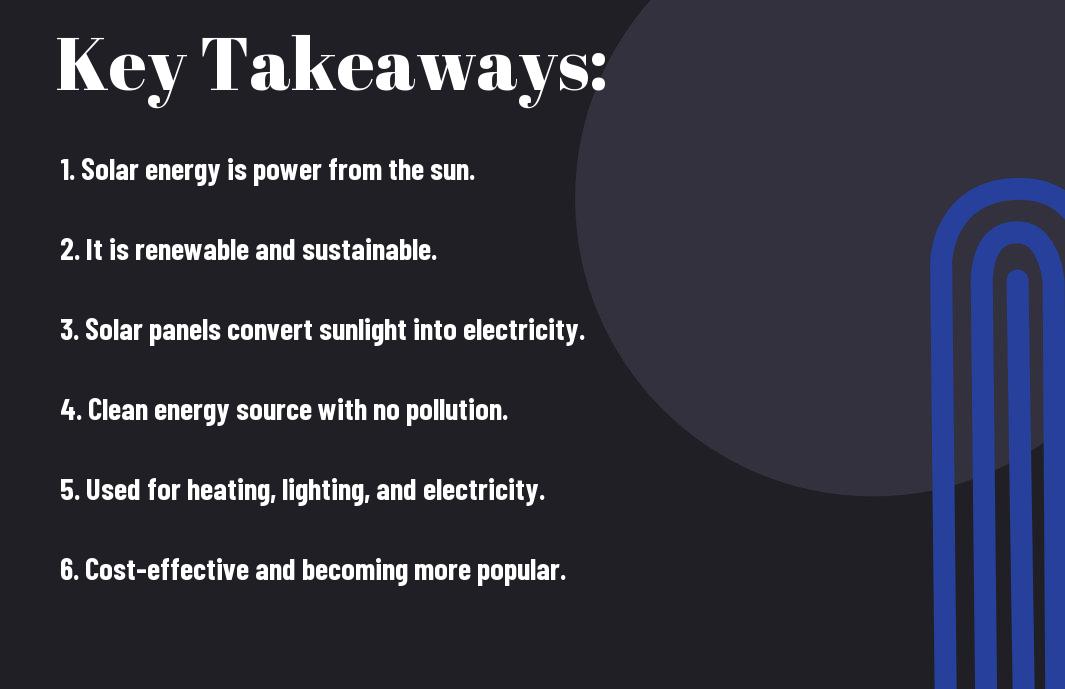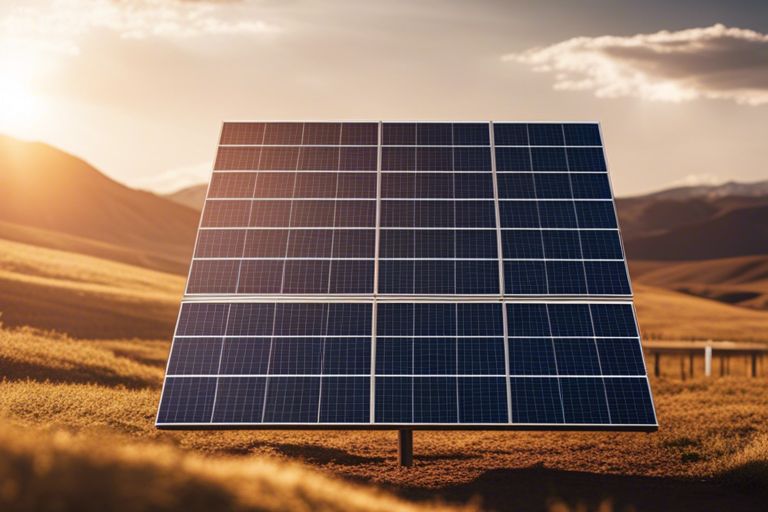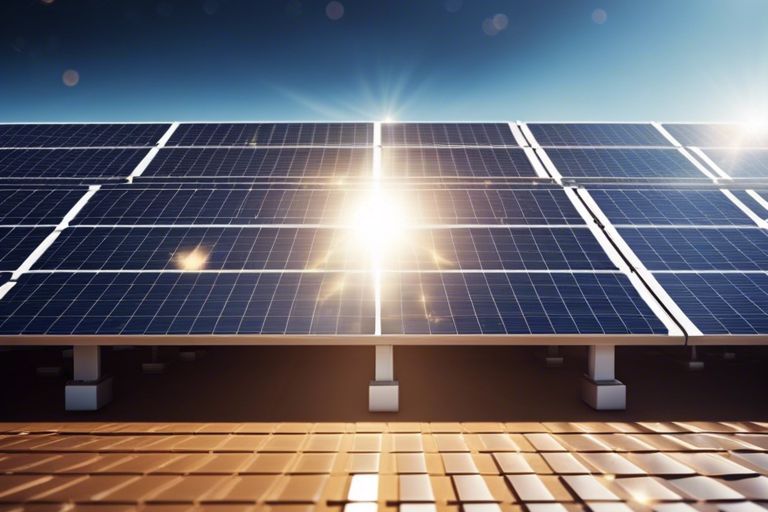Most of us are familiar with the concept of solar energy, but have you ever wondered how it actually works? Solar energy is the radiant light and heat from the sun that is harnessed using a range of ever-evolving technologies such as solar heating, photovoltaics, solar thermal energy, solar architecture, and artificial photosynthesis. If you want to probe deeper into the world of solar energy, check out this informative resource from Solar Energy – National Geographic Education.
Key Takeaways:
- Solar energy is energy from the sun that is converted into heat or electricity using solar panels.
- Solar panels are devices that capture sunlight and convert it into electricity through a process called the photovoltaic effect.
- Solar energy is a renewable and clean source of energy that reduces reliance on non-renewable resources like coal and oil.
- Solar energy is environmentally friendly because it produces no greenhouse gas emissions or air pollutants during operation.
- By harnessing solar energy, individuals and businesses can save money on their electricity bills and contribute to a more sustainable future.

What is Solar Energy?
Definition
A simple way to understand solar energy is that it is the energy we get from the sun. This renewable energy source is harnessed using various technologies, such as solar panels, to convert sunlight into electricity or heat for your home, business, or other applications.
History of Solar Energy
Energy from the sun has been used by humans for thousands of years. Ancient civilizations like the Greeks and Romans used architectural design to capture the sun’s warmth in buildings, while in the 7th century BC, magnifying glasses were used to make fire by concentrating the sun’s rays. Fast forward to the 19th century, when the first solar cell was built, marking the beginning of modern solar technology.
This journey of harnessing solar energy has evolved over time, with advancements in technology making solar power more efficient, affordable, and accessible than ever before. Today, solar energy is increasingly becoming a popular choice for homeowners, businesses, and governments looking to reduce their carbon footprint and transition to a cleaner, more sustainable energy source.
How Does Solar Energy Work?
Photovoltaic Cells
For a simpler explanation, solar energy works through the use of photovoltaic cells. These cells are made of semiconducting materials, such as silicon, that convert sunlight into electricity. When sunlight hits the cells, it creates an electric field that allows electrons to flow, generating direct current (DC) electricity.
Solar Panels
To harness solar energy effectively, multiple photovoltaic cells are interconnected and mounted on a frame to form a solar panel. These panels are then installed on rooftops or in solar farms to generate electricity from sunlight. The panels are positioned to maximize exposure to sunlight throughout the day, ensuring optimal energy production.
While solar panels are commonly seen on rooftops, they can also be integrated into building materials like windows or shingles. This integration allows for a more aesthetically pleasing and efficient use of solar energy, blending seamlessly into the structure of a building.
Converting Sunlight into Electricity
One of the key components in converting sunlight into electricity is an inverter. The inverter converts the DC electricity generated by the solar panels into alternating current (AC) electricity, which is used to power your home or can be fed back into the grid. This process ensures that the electricity produced by solar panels is compatible with the electrical systems in homes and businesses.
The solar energy system may also include a net meter, which tracks the amount of electricity generated and used. Any excess electricity produced can be stored in batteries for later use or credited back to you by your utility company through a process called net metering.
Benefits of Solar Energy
Renewable Resource
For any individual or community looking to reduce their carbon footprint and transition to a cleaner energy source, solar energy stands out as a reliable solution. By harnessing the power of the sun, you can generate electricity without depleting finite resources. Solar energy is a renewable resource, meaning it is virtually inexhaustible and can be relied on for the long term, providing a sustainable energy option for you and future generations.
Zero Emissions
Emissions from traditional energy sources like coal and natural gas contribute significantly to air pollution and climate change. By opting for solar energy, you can significantly reduce your carbon footprint and environmental impact. Solar panels produce electricity without emitting greenhouse gases or harmful pollutants, making it a clean and eco-friendly energy choice for you and the planet.
Zero emissions mean that when you switch to solar energy, you are not only benefiting from lower energy bills and increased energy independence but also actively contributing to a healthier environment by reducing harmful emissions that contribute to climate change and air pollution.
Energy Independence
One of the key advantages of solar energy is the opportunity it offers for greater energy independence. By installing solar panels on your property, you can generate your own electricity and reduce reliance on utility companies. This independence not only gives you more control over your energy consumption but also insulates you from fluctuations in energy prices, providing long-term savings and stability.
Energy independence through solar power empowers you to take charge of your energy needs and reduce your dependence on external sources for electricity. By producing your own clean energy, you can enjoy greater control over your household energy usage and make a positive impact on the environment while saving on electricity costs in the long run.

Types of Solar Energy Systems
Many types of solar energy systems exist, each designed for specific purposes and requirements. To help you understand the different solar energy systems available, let’s break them down into residential, commercial, and industrial categories. Assume that you can choose the system that best fits your needs and energy consumption.
| Residential Solar Systems | Commercial Solar Systems |
| – Grid-tied Systems | – Rooftop Solar Systems |
| – Off-grid Systems | – Solar Carports |
| – Solar Water Heating Systems | – Solar Farms |
| – Solar Battery Systems | – Solar PPA (Power Purchase Agreement) |
| – Solar Panel Kits | – Solar Thermal Power Plants |
Residential Solar Systems
An necessary type of solar energy system for homeowners is the grid-tied system. This system connects to the local utility grid, allowing you to draw electricity from the grid when needed and sell excess power back to the grid. Another popular option is off-grid systems, which are independent of the utility grid and rely on batteries to store excess energy for later use.
Commercial Solar Systems
To cater to the energy needs of businesses and commercial properties, various solar energy systems are available. Rooftop solar systems are commonly seen on commercial buildings, providing a clean and renewable energy source. Solar carports are structures with solar panels installed on the roof, offering both shade for vehicles and electricity generation.
A significant advantage of commercial solar systems is the potential for cost savings on electricity bills over the long term. By generating their electricity, businesses can reduce their dependence on traditional energy sources and stabilize their energy costs.
Industrial Solar Systems
Industrial solar systems are designed for large-scale energy production to meet the demands of industrial facilities and operations. These systems can include solar farms, which consist of vast expanses of solar panels to generate a considerable amount of electricity. Solar thermal power plants use mirrors to concentrate sunlight to heat a fluid and produce steam that drives a turbine to generate electricity.
Solar energy is becoming increasingly popular in industrial settings due to its cost-effectiveness and environmental benefits. By harnessing the power of the sun, industrial solar systems can help reduce greenhouse gas emissions and contribute to a cleaner energy future.
Applications of Solar Energy
Electricity Generation
Any time you see solar panels on rooftops or in large solar farms, you are witnessing the generation of electricity from solar energy. Solar panels, also known as photovoltaic cells, convert sunlight directly into electricity through a process that involves the movement of electrons. This electricity can be used to power homes, businesses, and even entire cities, providing a clean and renewable source of energy.
Water Heating
To harness solar energy for water heating, solar thermal systems are used. These systems collect and absorb sunlight to heat water for residential or commercial use. They are cost-effective and environmentally friendly alternatives to traditional water heaters, helping you save on energy bills while reducing your carbon footprint.
A solar water heater typically consists of solar collectors that are installed on rooftops to capture sunlight. The heated water can be stored in a tank for later use, ensuring a constant supply of hot water throughout the day.
Space Heating and Cooling
Generation Solar energy can also be utilized for space heating and cooling using solar thermal systems or heat pumps. In colder months, solar energy can be collected and used to heat buildings, while in warmer months, it can be used to power absorption chillers for air conditioning. This versatile application of solar energy helps maintain comfortable indoor temperatures throughout the year, reducing the dependence on fossil fuels for heating and cooling.
Cooling Solar energy can also be used for cooling purposes through the process of absorption cooling. This technology utilizes heat from the sun to drive a refrigeration cycle, providing a sustainable and energy-efficient way to cool buildings and spaces. By harnessing solar energy for cooling, you can reduce electricity consumption from traditional air conditioning systems, contributing to a greener and more sustainable future.

Challenges and Limitations of Solar Energy
Intermittency
To understand the challenges of solar energy, let’s start with its intermittency. Unlike fossil fuels that can generate power consistently, solar energy is dependent on sunlight availability. This means that solar panels can only produce electricity during the day when the sun is shining. At night or on cloudy days, the energy generation decreases or stops altogether.
High Upfront Costs
The high upfront costs associated with installing solar panels can be a significant limitation for many people. The initial investment in solar panels, inverters, and other necessary equipment can be quite expensive. The return on investment is achieved over time through energy savings and potential government incentives, but the initial cost barrier can deter potential adopters.
The good news is that over the years, the cost of solar panels has been decreasing due to technological advancements and increased competition in the market. Additionally, various financial options such as solar loans and leasing programs have made solar energy more accessible to homeowners and businesses.
Energy Storage
Solar energy storage is a crucial aspect to overcome the intermittent nature of solar power. Intermittency refers to the fluctuation in energy production based on sunlight availability. To address this, energy storage systems like batteries can store excess energy generated during the day for use when the sun is not shining. This helps to ensure a continuous and reliable power supply even when sunlight is not available.
A well-designed energy storage system can enhance the efficiency and reliability of a solar power setup, making it a more attractive option for those looking to reduce their reliance on the grid and harness the full potential of solar energy.
To wrap up
Following this exploration of what solar energy is in simple words, it is evident that this renewable source of power comes from the sun’s rays, which are converted into electricity or heat for our everyday use. By harnessing this clean and abundant energy source, we can reduce our reliance on fossil fuels, combat climate change, and create a more sustainable future for generations to come. Bear in mind, whether through solar panels on rooftops or solar farms in open fields, tapping into solar energy is a step towards a greener and more environmentally friendly world.
FAQ
Q: What is solar energy in simple words?
A: Solar energy is derived from the sun’s radiation and is harnessed using various technologies such as solar panels to generate electricity or heat water for residential and commercial use.
Q: How is solar energy converted into usable energy?
A: Solar energy is converted into usable energy through the use of solar panels, which contain photovoltaic cells that capture the sun’s rays and convert them into electricity. This electricity can then be used to power homes, businesses, and other applications.
Q: What are the benefits of using solar energy?
A: Some of the benefits of using solar energy include reducing electricity bills, decreasing carbon footprint and greenhouse gas emissions, promoting sustainability, and increasing energy independence. Solar energy is also a renewable and abundant resource that can help mitigate climate change.
